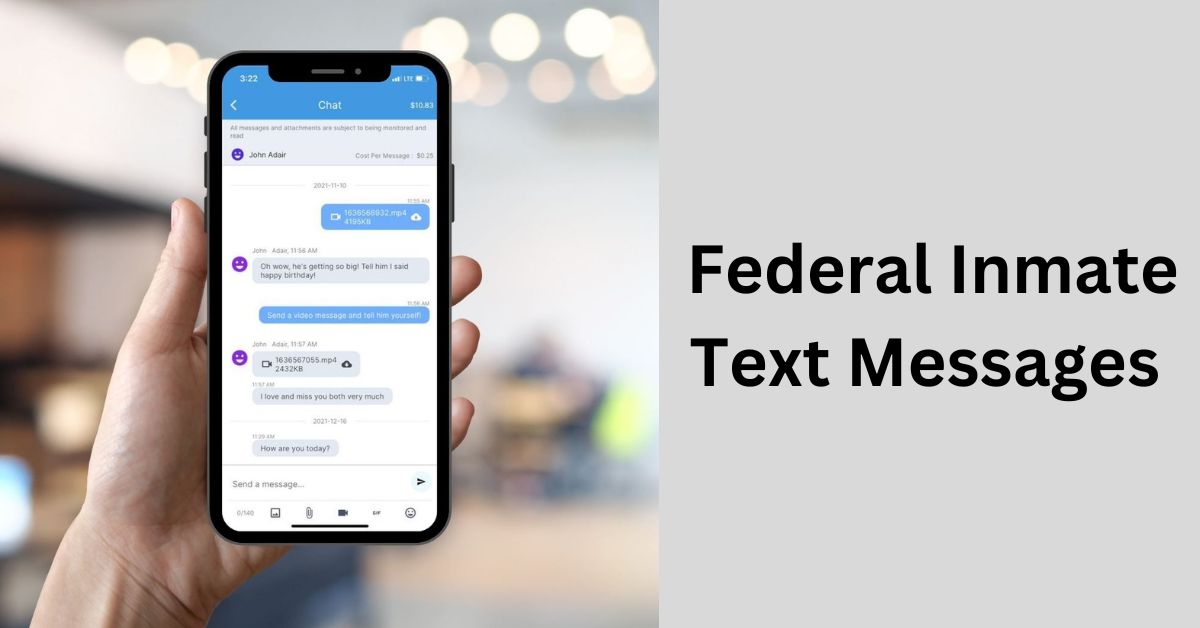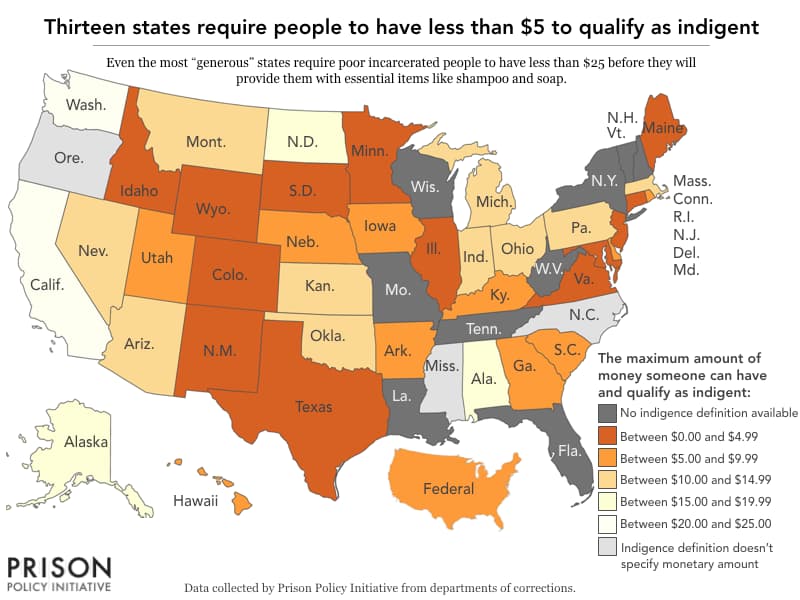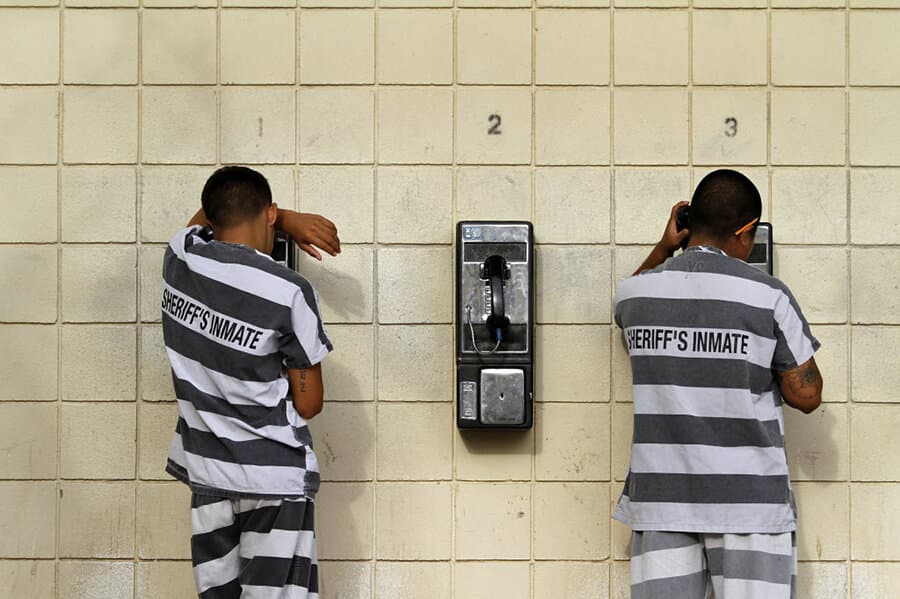
Federal Inmate Text Messages – Guiding The Challenges (2024)!
Within the confines of federal prisons, inmates have the opportunity to send text messages through approved systems. These text messages serve as a modern-day equivalent to traditional letters, providing a means for inmates to communicate while adhering to the established rules and regulations of the prison system.
In federal prisons, inmates can send text messages using approved systems. These messages are like letters but in text form. It’s a way for inmates to communicate within the rules of the prison system.
This article explores the nuances and challenges of text messaging for those incarcerated, shedding light on the implications and solutions.
Table of Contents:
The Rise Of Text Messaging In Prisons – We Need To Know That!
The addition of text messaging has extended its reach even into the confines of prisons, transforming the landscape of inmate communication.

In correctional facilities, including federal prisons, approved systems enable inmates to send text messages as a contemporary alternative to conventional letters.
This rise in inmate text messaging provides a quicker and more immediate means of correspondence, fostering a sense of connection with the outside world.
However, it is crucial to note that these communications operate within strict guidelines set by prison authorities to ensure security and compliance.
The beginning of this technology within prison walls reflects an evolving approach to inmate interaction, offering both advantages in efficiency and new challenges in terms of monitoring and control.
The rise of text messaging in prisons underscores the dynamic intersection between technology and the criminal justice system, shaping the way inmates engage with the outside realm.
Why Text Messaging Matters – Let’s Have A Look!
1. Bridging the Communication Gap:
Incarceration can be isolating, making communication crucial for maintaining connections. Text messaging has emerged as a vital tool for inmates to bridge the communication gap with the outside world.

Unlike traditional letters, text messages offer a swift and direct means of staying connected, enabling inmates to communicate with family and friends.
These messages play a pivotal role in fostering relationships and support systems, contributing to the well-being and rehabilitation of individuals within the confines of federal prisons.
2. Challenges and Restrictions:
While text messaging provides a valuable communication avenue, federal inmates encounter various challenges and restrictions. Content monitoring is a significant concern, as prison authorities closely scrutinize messages to ensure compliance with regulations.
Additionally, time limitations on messaging services may restrict the frequency and duration of inmate communications.
Navigating these challenges becomes an integral part of utilizing text messaging services within the structured environment of federal prisons, emphasizing the delicate balance between communication and security.
The Technical Landscape – Knowing It!
1. Secure Platforms for Inmate Communication:
Federal inmates rely on secure communication platforms designed to uphold privacy and comply with prison regulations. These platforms prioritize the confidentiality of messages, employing encryption and other security measures.

By offering a controlled environment, these secure platforms facilitate communication without compromising the safety and integrity of the prison system.
Emphasizing the importance of such systems highlights the commitment to balancing inmate communication needs with the necessity of maintaining security protocols.
2. Overcoming Technological Barriers:
Confine individuals face technological limitations that impact their text messaging capabilities. Limited access to devices, restrictions on internet connectivity, and controlled usage environments pose challenges.
To address these barriers, innovative solutions include controlled kiosks or tablets within prisons that provide supervised access to approved communication platforms.
These advancements aim to overcome technological constraints, offering a more inclusive and secure approach to inmate text messaging while ensuring adherence to prison regulations.
Legal Implications – Let’s Explore It!
1. The Thin Line of Legalities:
Examining the legal landscape surrounding text messaging in federal prisons reveals a delicate balance between inmate communication rights and security considerations. Striking the right balance is crucial to avoid potential legal pitfalls and ensure a fair and lawful prison environment.

Issues such as privacy, content monitoring, and the consequences of misuse require careful consideration to navigate the thin line of legalities associated with inmate text messaging.
2. Inmate Rights and Communication:
Exploring inmate rights in the context of communication underscores the need to maintain a delicate equilibrium between security protocols and individual freedoms.
While inmates possess the right to communicate, these rights are subject to reasonable restrictions to uphold the safety and order of the prison system.
Understanding and delineating these boundaries is essential to safeguarding both the rights of inmates and the overarching legal framework governing text messaging within federal prisons.
By shedding light on this intricate balance, we gain insight into the complex interplay between legal considerations and the communication rights of incarcerated individuals.
Impact On Rehabilitation – Knowing It!
1. Text Messaging as a Rehabilitation Tool:
Discuss how text messaging can play a role in the rehabilitation process, fostering positive behavior and connection with support networks.
2. Educational Opportunities Through Messaging:
In federal prisons, text messaging initiatives provide educational resources for inmates. Through simple text messages, incarcerated individuals can access reading materials, lessons, and online courses, making learning more accessible.
These programs aim to support education as a means of rehabilitation, recognizing the challenges of limited access to traditional resources in prison.
By leveraging text messaging, these initiatives help empower federal inmates with educational opportunities for personal development and skill-building during their time in custody.
Solutions For Improved Communication – Let’s Find Out!
1. Advancements in Communication Technology:
Advancements in communication technology have transformed how we connect and share information.

From the widespread adoption of high-speed internet to the rise of smartphones, these innovations enable instant communication, seamless collaboration, and global connectivity.
This technological progress has not only enhanced personal interactions but has also revolutionized industries, education, and healthcare, creating a more interconnected and accessible world.
2. Collaborative Efforts for Positive Change:
Collaborative efforts for positive change involve individuals, organizations, and communities working together to address shared challenges and bring about meaningful improvements.
This collective approach fosters synergy, pooling resources and expertise to create impactful solutions. By uniting diverse perspectives and skills, collaborative efforts maximize the potential for positive change on a broader scale.
Frequently Asked Questions:
1. What does “collaborative efforts for positive change” mean?
Collaborative efforts for positive change refer to joint initiatives where individuals, organizations, and communities come together to address common challenges and create meaningful improvements in various aspects of society.
2. Why is collaboration important for positive change?
Collaboration brings together diverse perspectives, resources, and skills, fostering synergy to tackle complex issues more effectively. By combining efforts, the collective impact is often greater, leading to positive and sustainable changes.
3. What types of challenges can collaborative efforts address?
Collaborative efforts can address a wide range of challenges, including social, environmental, economic, and health-related issues. Examples include community development projects, environmental conservation efforts, and initiatives to improve education and healthcare.
Conclusion:
when people work together for positive change, combining their ideas and resources, they can make a big impact. Collaborative efforts bring different strengths and perspectives, making improvements in society more effective and long-lasting.
Working together helps achieve common goals and create positive, lasting changes for everyone involved.






